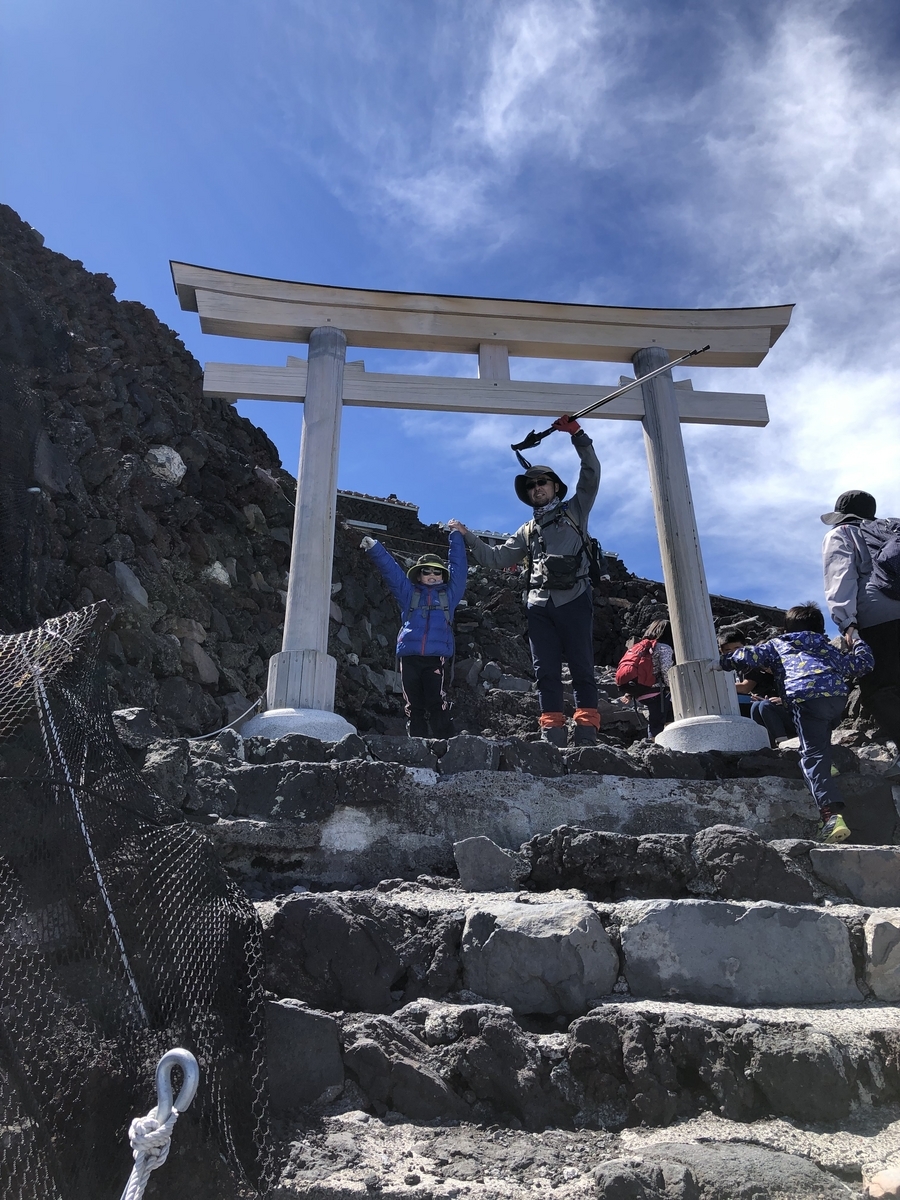
Welcome to the land of the rising sun, where ancient traditions meet modern innovation, and natural beauty abounds. At the heart of it all stands the majestic Mt. Fuji, a symbol of Japan's enduring strength and serenity. Whether you're an avid adventurer or a curious traveler, climbing Mt. Fuji is a once-in-a-lifetime experience that promises unforgettable memories. This comprehensive guide will equip you with everything you need to conquer Japan's highest peak. So, lace up your hiking boots, breathe in the crisp mountain air, and embark on the journey of a lifetime.
A Beginner's Guide to Climbing Mt. Fuji
Before You Begin: What You Need to Know
Climbing Mt. Fuji is a rite of passage for many adventurers visiting Japan. This iconic mountain, standing at 3,776 meters, is not only the country's highest peak but also a sacred symbol in Japanese culture. Before embarking on this journey, it's essential to understand the mountain's significance and respect its natural beauty.
Essential Gear for a Safe Climb
When it comes to climbing Mt. Fuji, preparation is key. The right gear can make the difference between a challenging yet rewarding experience and a potentially dangerous situation. Essential items include sturdy hiking boots, warm clothing (even in summer, temperatures at the summit can be freezing), a headlamp for night climbing, and plenty of water and snacks.
Understanding the Routes and Their Features
Choosing Your Route: Features and Selection
Mt. Fuji has four main climbing routes: Yoshida, Subashiri, Gotemba, and Fujinomiya. Each has its unique features and challenges. The Yoshida route is the most popular, offering mountain huts and facilities. Subashiri and Gotemba routes are less crowded, providing a more serene experience, while the Fujinomiya route is the shortest but also the steepest.
Recommended Routes for Beginners and Why
For beginners, the Yoshida route is often recommended. It's well-marked and offers plenty of mountain huts for rest and replenishment. The trail is also divided into ten stations, with the fifth station being the starting point for most climbers. This clear segmentation helps beginners gauge their progress and manage their pace effectively.
Building Physical Stamina and Training for the Climb
Pre-Climb Fitness: Key Points for Building Stamina
Climbing Mt. Fuji is a physically demanding endeavor. Building your stamina in the weeks leading up to your climb can make the experience more enjoyable and less strenuous. Incorporate cardio exercises like running, cycling, or swimming into your routine, and don't forget strength training, particularly for your legs and core.
Training Methods Beneficial for Mountain Climbing
Specific training methods can help prepare your body for the unique challenges of mountain climbing. Hiking on inclined treadmills or stair climbers can simulate the steep ascents of Mt. Fuji. Additionally, practicing on local hills or mountains with a loaded backpack can help acclimate your body to the weight and balance needed for the actual climb.
Safety Measures for Climbing Mt. Fuji
Preventing Altitude Sickness: Measures and Tips
Altitude sickness is a common concern when climbing Mt. Fuji due to its high elevation. Symptoms can include headaches, nausea, and dizziness. To prevent this, it's crucial to ascend slowly to allow your body to acclimatize. Staying hydrated, eating light meals, and taking rest breaks can also help. If symptoms persist, descend immediately.
Emergency Safety Measures and Contact Methods
Despite your best preparations, emergencies can happen. It's essential to know the emergency procedures on Mt. Fuji. Mountain huts and the fifth stations have first-aid facilities, and there are emergency phones along the routes. Always let someone know your climbing plan, and consider carrying a whistle and a small first-aid kit for minor injuries.
Enjoying the Climb: Mt. Fuji's Scenic Spots
Breathtaking Views from Mt. Fuji
Climbing Mt. Fuji is not just about reaching the summit; it's also about the journey. The mountain offers breathtaking views at every turn. From the stunning sunrise at the summit to the sea of clouds often seen from the eighth station, there's plenty to marvel at. Don't forget your camera!

Post-Climb Relaxation and Refreshment
After the strenuous climb, reward yourself with some relaxation and refreshment. Many climbers enjoy a soak in one of the many hot springs located at the base of the mountain. You can also savor local delicacies like Yoshida udon, a thick noodle dish named after the popular climbing route.
Climbing Mt. Fuji: Seasonal Features and Best Times
The Scenery and Charm of Each Season
While the official climbing season is from early July to early September, Mt. Fuji's beauty can be appreciated year-round. In spring, the surrounding area is adorned with cherry blossoms. In autumn, the mountain is framed by vibrant fall foliage. Winter offers a majestic view of the snow-capped peak, but climbing is highly discouraged due to dangerous conditions.
The Ideal Climbing Season and Why
The best time to climb Mt. Fuji is during the official climbing season when the mountain huts are open, and medical aid is available. The weather is also relatively stable during this period. Climbing outside of this season is considered off-limits for casual climbers due to the risk of severe weather and lack of facilities.
Mt. Fuji Climbing Checklist: What to Bring
Essential Items and How to Choose Them
Packing the right items can make your climb safer and more comfortable. Essentials include warm clothing, rain gear, a headlamp, gloves, and a hat. Choose lightweight and durable items where possible. Don't forget personal items like sunscreen, toiletries, and a small towel.
Useful Gadgets to Enhance Your Climbing Experience
In addition to the essentials, some gadgets can enhance your climbing experience. A portable battery can keep your devices charged. Trekking poles can provide stability, and a hydration bladder can make drinking water more accessible. Remember, every extra item adds weight to your pack, so choose wisely.
Etiquette and Manners for Climbing Mt. Fuji
Manners During the Climb: Points to Note
Climbing Mt. Fuji is not just a physical challenge but also a cultural experience. Respecting the mountain and fellow climbers is paramount. Keep to the designated paths to protect the mountain's delicate ecosystem. Avoid loud noises that can disturb others and wildlife. Always carry your trash with you to keep the mountain clean.
Guidelines for Preserving Nature and Culture
Mt. Fuji is a UNESCO World Heritage site and holds great cultural and spiritual significance in Japan. When climbing, it's essential to respect these values. Stick to the trails to avoid damaging the mountain's flora. Be mindful of sacred sites and monuments you may encounter during your climb. Remember, you are a guest on the mountain.
Post-Climb Recovery: Taking Care of Your Body
Managing Your Health Post-Climb
After the exhilaration of reaching the summit, it's important to take care of your body. Rest and rehydrate as soon as you finish your climb. Eat a balanced meal to replenish your energy. Pay attention to any signs of physical discomfort or fatigue in the days following your climb. If you feel unwell, seek medical attention.
Relaxation and Refreshment After the Climb
Post-climb relaxation is a reward for your hard work. Consider visiting a local hot spring (onsen) to soothe your muscles. Enjoy the local cuisine, such as houtou, a hearty noodle dish from the Yamanashi region. Take time to reflect on your achievement and the memories you've made.
Additional Information to Enhance Your Mt. Fuji Climbing Experience
Sightseeing Spots and Gourmet Food Around Mt. Fuji
Your Mt. Fuji adventure doesn't have to end with the climb. The surrounding area offers plenty of sightseeing spots, such as the beautiful Fuji Five Lakes or the historic Oshino Hakkai springs. Don't miss out on the local gourmet food, like Fujinomiya yakisoba, a popular stir-fried noodle dish.
Commemorative Activities for Your Mt. Fuji Climb
Commemorate your achievement with a unique souvenir or activity. Many climbers purchase a wooden walking stick at the fifth station, which can be branded at each station for a small fee. You can also send a postcard from the summit's post office, a unique way to share your achievement with loved ones.
Key Takeaway
| Theme | Key Takeaway |
| Preparation | Understanding the cultural significance of Mt. Fuji and the essential gear needed for the climb is crucial. |
| Route Selection | Choosing the right route based on your skill level and understanding its unique features can enhance your climbing experience. |
| Physical Training | Building physical stamina through appropriate training methods is vital for a successful climb. |
| Safety Measures | Safety measures, including prevention of altitude sickness and emergency procedures, are critical for a safe climb. |
| Enjoying the Climb | The journey is as important as the destination. Enjoy the breathtaking views and post-climb relaxation. |
| Seasonal Features | Understanding the seasonal features of Mt. Fuji helps in planning the ideal time for the climb. |
| Climbing Checklist | Packing the right items, including essential gear and useful gadgets, can make your climb safer and more comfortable. |
| Etiquette and Manners | Respecting the mountain and fellow climbers is paramount. Preserve nature and respect the cultural significance of Mt. Fuji. |
| Post-Climb Recovery | Taking care of your health post-climb is important. Rest, rehydrate, and eat a balanced meal. |
| Additional Information | Enhance your Mt. Fuji experience by exploring local sightseeing spots and participating in commemorative activities. |
As you stand at the summit of Mt. Fuji, watching the sunrise paint the sky in hues of gold and crimson, you'll realize that the climb was more than just a physical challenge. It was a journey of self-discovery, a testament to your resilience, and a celebration of the beauty of nature. But remember, the adventure doesn't end here. With each descent comes the promise of a new ascent, a new challenge to conquer, a new story to tell. So, here's to the trails we've tread, the heights we've reached, and the mountains we'll meet.
Until next time, keep climbing!